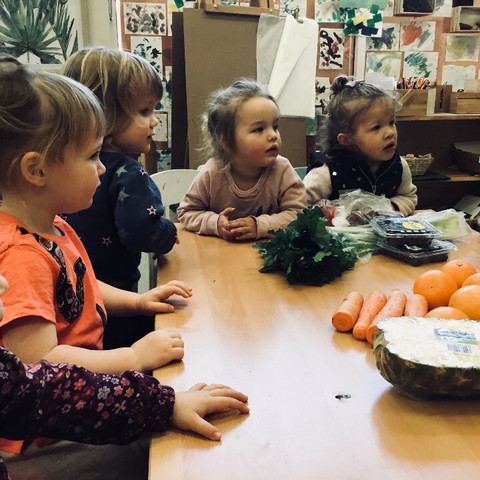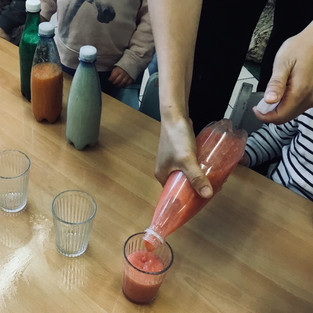Rainbow Smoothies
- Sophia Vidovic White
- Feb 25, 2019
- 3 min read
Thursday 12th September 2018
Many of us assume that an appreciation for blended fruits won’t translate to our children. But not only is a daily green smoothie just as healthy for children as it is for adults, starting healthy habits early means they’ll stay for life. One of the best ways to teach children about nutrition is to familiarise them with healthy foods. Learning names of various fruits and learning the different properties — soft or crunchy, big or small, colour, etc. — helps them feel empowered and adventurous.
One of the most important lessons about food we would like for our children to learn is the importance of variety. Eating fresh, whole foods is important, but your body doesn’t benefit nearly as much unless you are eating a wide variety of foods. We thought the beginning of spring was the perfect time to teach our children about the concept of “eating the rainbow.” The intention for this activity was to encourage our children to eat a variety of colours everyday and motivate them to continue eating a variety of foods.
We aimed to help combat picky eating by introducing lots of flavours to children. Smoothies are a great way to incorporate new flavours that may otherwise be tricky to serve. We added some things that our children might not try with regular meals, like fresh ginger, mint and lemon to the recipes below.
We started out by setting up a small table with 4 colourful smoothies and the whole foods that went into them. We used coconut water as the liquid because we wanted to keep the colours as vibrant as possible and milk tends to dilute the colours a little.
We made:
Blue/purple smoothie: 1 cup frozen blueberries and 1/2 cup coconut water
Green smoothie: 1/2 cup frozen pineapple chunks, small handful baby spinach and 1/2 cup coconut water
Yellow smoothie: 1 banana, 1/4 cup frozen pineapple chunks and 1/2 cup coconut water
Orange smoothie: 1 orange, 1/2 cup baby carrots, steamed, 1/4 cup coconut water and a few ice cubes
It was great to involve our children in the process, as it will get them comfortable in the kitchen. Together we were able to rinse, peel, chop, dice and add ingredients to the blender. As we added all the ingredients, the children got all excited and shouted loudly when we pushed the button to blend everything all up. Once the blending was complete, we poured each child a small cup of smoothie to taste.
Here, we are changing our menu to go with seasonal foods and relying less on packaged options. Something as simple with a blended smoothie is the perfect energy food to fuel our children’s needs and to provide them with the right nutrients to help them grow. They’ll also get a helping of healthy fats, protein, fibre and naturally occurring vitamins and minerals.
Links to the Australian EYLF:
Outcome 1: Children feel safe, secure and supported when investigating unfamiliar fruits. The children can be provided with the opportunity to initiate conversations with peers and trusted educators and be able to express their ideas and feel respected.
Outcome 3: Children take increasing responsibility for their own health and physical wellbeing. This experience allows children to show an increasing awareness of fruit.
Outcome 4: This experience can allow the child to demonstrate their creativity, curiosity, imagination and commitment through asking descriptive questions in order to gather information. Problem solving and investigation skills can also be shown. The educators were able to encourage a learning environment that is flexible and open-ended aiding the children to develop the above dispositions.
Outcome 5: Children are effective communicators. Children interact with educators and peers verbally to gather information. Discussion allows children to develop communication skills such as listening, interacting and understanding.














































Comments